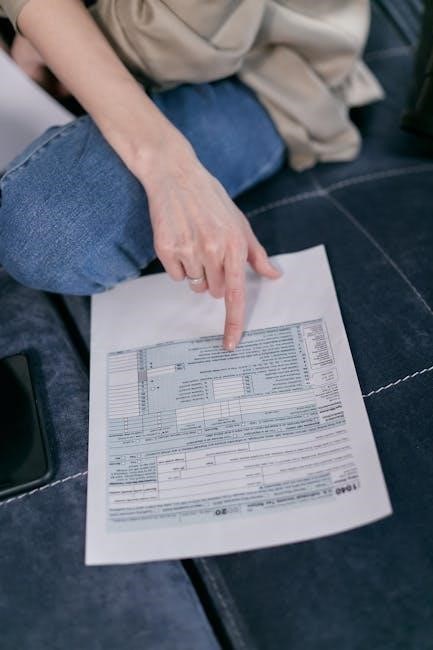Virginia 502 instructions provide guidance on filing requirements for pass-through entities, including S-Corporations and Partnerships, with and instructions available online for users to access easily always.
Purpose of Form 502
The purpose of Form 502 is to report the income and nonresident withholding tax of pass-through entities, such as S-Corporations, Partnerships, and Limited Liability Companies, that do business in Virginia or receive income from Virginia sources.
This form is used to detail the income and tax withholding of these entities, ensuring compliance with Virginia tax laws.
The information provided on Form 502 is used to calculate the tax liability of the entity and its members, and to determine the amount of nonresident withholding tax due to the state.
The form includes sections for reporting income, deductions, and credits, as well as information on the entity’s members and their respective shares of income and tax liability.
Overall, the purpose of Form 502 is to provide a comprehensive report of the tax activities of pass-through entities in Virginia, and to facilitate the calculation and payment of taxes due to the state.
The form is an essential part of the tax filing process for these entities, and is used by the state to ensure compliance with tax laws and regulations.
Form 502 is a critical component of Virginia’s tax system, and is used to promote fairness and integrity in the administration of tax laws.
Entities Required to File Form 502
Entities required to file Form 502 include S-Corporations, Partnerships, and Limited Liability Companies that do business in Virginia or receive income from Virginia sources.
These entities must file Form 502 to report their income and nonresident withholding tax, regardless of whether they have taxable income or not.
The filing requirement applies to entities that have Virginia sourced income, such as rental income, interest, or dividends;
Additionally, entities that have members who are nonresidents of Virginia must also file Form 502 to report nonresident withholding tax.
The entity’s tax year and filing status determine the filing requirements, and the form must be filed by the due date to avoid penalties and interest.
The Virginia tax authority provides guidance on the filing requirements and instructions for completing Form 502, which can be found on their website.
Entities can also consult with tax professionals to ensure compliance with Virginia tax laws and regulations.
Overall, entities required to file Form 502 must comply with Virginia tax laws and file the form by the due date to avoid any penalties or fines.

Eligibility and Filing Requirements
Eligibility for filing Form 502 is determined by entity type and Virginia sourced income with
tax
laws and regulations always.
Pass-Through Entities and Filing Obligations
Pass-through entities, including S-Corporations, Partnerships, and Limited Liability Companies, are required to file Form 502 with the Virginia Department of Taxation. These entities must report their income and withholding tax on this form, which is used to determine their tax liability. The filing obligation for pass-through entities is determined by their business activity in Virginia or receipt of income from Virginia sources. Entities that meet these criteria must file Form 502, regardless of whether they have taxable income or not. The form is used to report the entity’s income, deductions, and credits, as well as withholding tax on nonresident owners. By filing Form 502, pass-through entities can ensure compliance with Virginia tax laws and regulations, and avoid potential penalties and interest. The Virginia Department of Taxation provides guidance and instructions on filing Form 502, which can be accessed online.
Income Tax Return Filing for Pass-Through Entities
Pass-through entities in Virginia are required to file an income tax return on Form 502, which includes reporting their income, deductions, and credits. The form is used to calculate the entity’s tax liability and to report withholding tax on nonresident owners. The Virginia Department of Taxation provides instructions and guidance on filing Form 502, which can be accessed online. Entities must report their income from all sources, including business income, rental income, and capital gains. They must also report their deductions and credits, such as depreciation, interest, and charitable contributions. The form must be filed annually, and the deadline for filing is typically May 1st. Pass-through entities can file Form 502 electronically or by mail, and they must pay any tax due by the filing deadline to avoid penalties and interest. The Virginia Department of Taxation offers resources and support to help entities comply with filing requirements.

Form 502 Instructions and Guidance
Virginia provides
tax guidance
and instructions for Form 502, helping users understand filing requirements and procedures easily always online.
Accessing Form 502 and Related Information
To access Form 502 and related information, users can visit the official Virginia tax website, which provides a comprehensive guide to filing requirements and procedures. The website offers a range of resources, including tax forms, instructions, and FAQs, to help users navigate the filing process. Additionally, users can download and print Form 502, as well as access related forms and schedules, such as the Form 1099-G and Form W-8BEN. The website also provides information on tax rates, deductions, and credits, as well as guidance on how to file electronically. By accessing the official Virginia tax website, users can ensure that they have the most up-to-date information and resources to complete their Form 502 accurately and efficiently. The website is user-friendly and easy to navigate, making it a valuable resource for individuals and businesses alike. Overall, accessing Form 502 and related information is a straightforward process;
Understanding Virginia Pass-Through Entity Tax
Understanding Virginia pass-through entity tax is crucial for businesses and individuals who need to file Form 502. The tax is imposed on pass-through entities, such as S-Corporations and Partnerships, that conduct business in Virginia or receive income from Virginia sources. The tax rate and filing requirements vary depending on the type of entity and the amount of income earned. To ensure compliance, it is essential to understand the tax laws and regulations governing pass-through entities in Virginia. The official Virginia tax website provides detailed information on pass-through entity tax, including tax rates, filing requirements, and payment options. By understanding the tax laws and regulations, businesses and individuals can ensure that they are in compliance and avoid any potential penalties or fines. The tax laws and regulations are subject to change, so it is essential to stay up-to-date with the latest information and guidance.

Common Questions and Answers
Frequently asked questions and answers regarding Virginia 502 instructions are available online with
tax forms
and guidance for users to access easily always and quickly every time.
Automatic Filing Extension for Pass-Through Entities
An automatic 6-month filing extension is allowed for pass-through entities filing on Form 502, providing additional time for entities to complete and submit their tax returns. This extension is available to help entities that need more time to gather necessary information and complete their tax filings. The extension applies to pass-through entities, including S-Corporations and Partnerships, and is intended to alleviate some of the burden associated with meeting tax filing deadlines. Entities can take advantage of this extension to ensure they have sufficient time to accurately complete their tax returns and avoid potential penalties. With this extension, pass-through entities can file their tax returns by the extended deadline, which is typically 6 months after the original due date. This allows entities to focus on their business operations while still meeting their tax filing obligations. The automatic extension is a valuable resource for pass-through entities in Virginia.
Itemized Deductions and 1099G Information
For taxpayers who itemized deductions, 1099G information is available online, allowing them to access and download their forms easily. The 1099G form provides important information about refund amounts and is necessary for taxpayers to complete their tax returns. Taxpayers can visit the official website to download their 1099G forms and access other relevant tax information. The website also offers a page dedicated to Form 1099-G/1099-INT, where taxpayers can find more information and instructions on how to access their forms. Additionally, taxpayers can use the online portal to check the status of their refunds and access other tax-related resources. The availability of 1099G information online makes it convenient for taxpayers to gather the necessary information to complete their tax returns and claim itemized deductions. By providing easy access to 1099G forms, the tax authority aims to simplify the tax filing process for taxpayers. This online resource is a valuable tool for taxpayers in Virginia.

Additional Resources and Information
For taxpayers seeking additional guidance on Virginia 502 instructions, various resources are available. The official website provides a comprehensive list of frequently asked questions and answers, as well as a section dedicated to tax news and updates. Taxpayers can also access the website’s resource library, which includes instructional videos, webinars, and downloadable guides. Furthermore, the website offers a subscription-based service, allowing taxpayers to receive email updates and reminders about important tax deadlines and filing requirements. A list of authorized tax professionals and preparers is also available, providing taxpayers with a reliable source of expert advice and assistance. By utilizing these resources, taxpayers can ensure they have access to the most up-to-date and accurate information, enabling them to navigate the tax filing process with confidence. The website’s user-friendly interface and organized layout make it easy for taxpayers to find the information they need.
